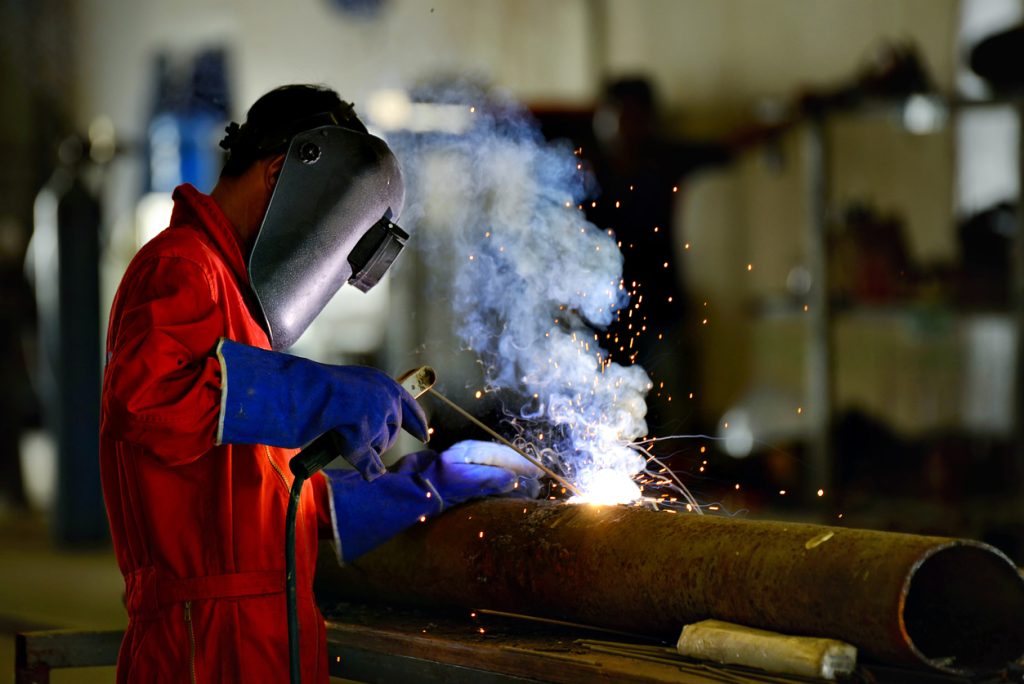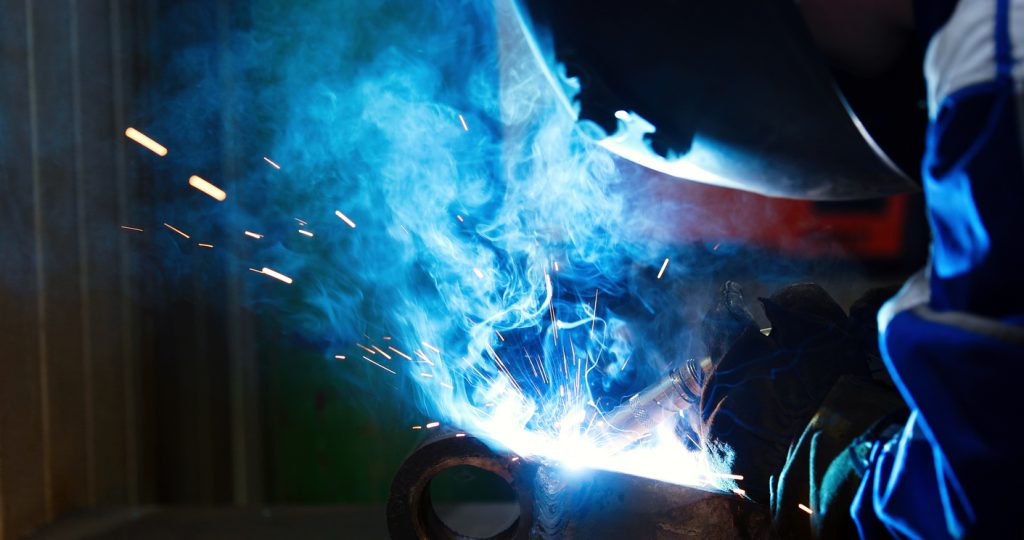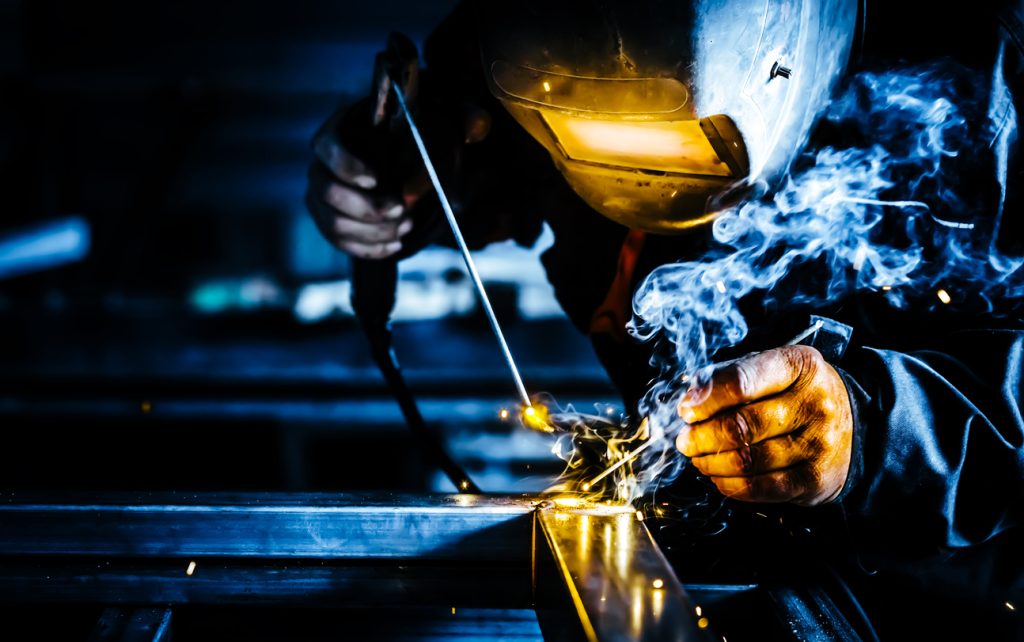What is Arc Welding?
Arc welding is a welding process that uses an electric arc to generate heat that melts and joins metals together. The power supply creates an electric arc connecting a consumable or non-consumable electrode and your base material — this can be done using either direct (DC) or alternating (AC) currents.
In this blog, we’ll take a closer look at arc welding, the different types and the advantages and disadvantages of this method.
How does Arc Welding Work?
Arc welding is a common fusion welding method used to join metals. The electric arc is powered by an AC or DC supply which delivers 6500°F heat. The heat source melts the metal at the join between the pieces.

You can manually or mechanically guide the arc along the join line. The electrode carries the current (or conducts the current) to melt into the weld pool, supplying filler metal to the join. The metals react chemically to both oxygen and nitrogen in the air when heated, so shielding gas should be applied to reduce the contact of the molten metal with the air. A solidified metallurgical bond is formed once the molten metals are cooled.
DC vs AC Currents
You can source electric power for arc welding through a direct (DC) or alternating (AC) current. DC arc welding is commonly used for stick welding and lower-voltage cases. The DC uses steadily flowing electrons that travel in one direction, giving you a smoother and more stable arc.
The AC arc welding current flows back and forth, switching polarity sixty times per second (60 Hertz). There is greater volatility in the electrons as they change direction constantly — DC is the preferred method because of this. However, AC can be beneficial when a stronger current is required to prevent the arc from blowing out or if you need to transmit electricity over distance.

Different Types of Arc Welding
There are many different types of arc welding, and this process can be grouped into two categories; consumable and non-consumable electrode methods. Below we will expand on each technique.
Consumable Electrode Methods
- Metal Inert Gas Welding (MIG) and Metal Active Gas Welding (MAG) – this method uses a shielding gas that protects the base metals from contamination.
- Shielded Metal Arc Welding (SMAW) or Manual Metal Arc Welding (MMA or MMAW) – the process of striking the arc between the metal rod (electrode flux coated) and the workpiece, which both melt to form a weld pool.
- Flux Cored Arc Welding (FCAW) – this method uses a continuously fed consumable flux cored electrode and continual voltage power supply, providing a constant arc length. Shielding gas is used to protect from contamination.
- Submerged Arc Welding (SAW) – uses a continuously fed consumable electrode and a blanket of fusible flux that is conductive when molten. The flux provides a current path between the part and the electrode and will help to lessen spatter.
- Electro-Slag Welding (ESW) – this vertical method is used to weld thick plates (above 25mm) in a single session. This method requires an electric arc before a flux addition extinguishes the arc. As the wire consumable is fed into the pool, the flux melts and creates a molten slag on top of the pool.
- Arc Stud Welding (SW) – this method allows you to connect a nut or fastener to a flange (with nubs) that melt to construct the join to another metal piece.
Non-Consumable Electrode Methods
- Tungsten Inert Gas Welding (TIG) – also called Gas Tungsten Arc Welding (GTAW), uses a non-consumable tungsten electrode to form the arc. An inert shielding gas should also be applied to protect the molten pool and weld from atmospheric contamination.
- Plasma Arc Welding (PAW) – not to be confused with TIG, this method uses an electric arc between a non-consumable electrode and an anode. The electric arc ionises the gas in the torch and creates plasma; the plasma is then separated from the shielding gas via a small borehole in the anode.
High-Quality Welding Gas from Bottle Gases
Quality MIG welding gas and TIG welding gas play a key role in ensuring that you complete each weld to the highest standard.

As experienced bottled gas suppliers, we pride our business on offering a comprehensive CO2 and Argon gas range suitable for all MIG and TIG welding projects. We have a large selection of cylinders available:
And more sizes are available to cover your necessities.
If you’re unsure of which type of gas you need, then please get in touch. We have a team of experienced staff waiting to take your call, so please do feel free to contact us at 01843 220 596 or send us an enquiry by using our online enquiry form today.




